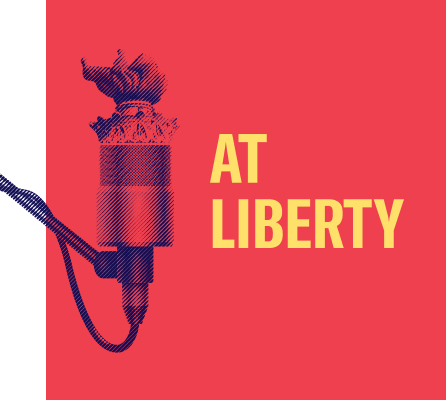This piece was originally posted as part of the Huffington Post Shadow Conventions 2012, a series spotlighting three issues that are not being discussed at the national GOP and Democratic conventions: The Drug War, Poverty in America, and Money in Politics.
As the presidential election season heats up, the candidates will clash over how the country should climb back from the 2008 economic slump. But often lost in that debate is recognition of the especially harsh impact the economic downturn has had on communities of color. All communities have been touched by the economic crisis, but not all have been affected or treated equally. A meaningful debate about the path to recovery requires a careful examination of the uneven impact on African-American and Hispanic families and the role of racial discrimination in creating the ongoing distress.
As is true with so many aspects of American life, when it comes to the impact of the economic crisis, race matters: According to the Pew Research Center, the median wealth of white households has grown to 20 times that of black households and 18 times that of Hispanic households. The report noted the historic significance of such pronounced inequality, as the gap is the largest since such data collection started over a century ago.
These growing disparities stem directly from the impact the financial crisis had on different communities. While white household wealth declined by 16 percent between 2005 and 2009, black households lost 53 percent of their wealth and Hispanic household wealth dropped by 66 percent. Among other things, this reflects the effect of foreclosures, which have hit minority households with disproportionate force. Homeownership accounts for a greater share of household wealth for black and Latino families than it does for whites. The surge in foreclosures caused a greater portion of that wealth to evaporate, taking with it much of the progress communities of color made in joining the middle class over the past five decades.
These staggering inequalities reinforce themselves over the course of generations. Wealth gaps reproduce themselves as each generation enjoys advantages inherited from family. This means that current racial wealth gaps will beget future racial inequality. “Study after study,” according to a recent NPR report, “shows that white families are more likely than blacks and Hispanics to enjoy certain economic advantages — even when their incomes are similar.” Those advantages tilt the scales in favor of those who begin with a leg up. Uneven starting points, in other words, mean that current losses of wealth — especially because of economic shocks, like foreclosure — will shape the fortunes of one’s children and grandchildren.
Why did the economic collapse hit communities of color with such amplified force? These gaping wealth disparities reflect many sources of inequality, but flow in large part from abuses in the subprime lending market, which sent the wider economy into a tailspin. And those abusive lending practices were rooted in racial discrimination.
Subprime lending and race were inextricably linked from the outset. A 2000 government report found that borrowers in black neighborhoods were five times as likely to refinance in the subprime market as borrowers in white neighborhoods, even when controlling for income. Worse, the report indicated that these disparities could not be linked to preexisting differences in economic conditions, because “borrowers in upper-income black neighborhoods were twice as likely as homeowners in low-income white neighborhoods to refinance with a subprime loan.”
These disparities became entrenched as subprime lending expanded. A 2006 report found that, within the subprime market, minority borrowers were over 30 percent more likely to get higher-rate loans than whites, even after risk differences were accounted for. Communities of color consistently received loans with higher price tags and riskier terms, even when white borrowers with similar qualifications received safer loans.
Predictably, discrimination in the subprime market led directly to massive disparities in foreclosure rates. By 2010, African Americans and Latinos were 47 percent and 45 percent more likely than whites to face foreclosure. The link between race, subprime lending, and elevated rates of foreclosure has become crystal clear. According to Princeton researchers, “the greater the degree of Hispanic and especially black segregation a metropolitan area exhibits, the higher the number and rate of foreclosures it experiences.”
And yet, the vicious cycle continues. Abusive subprime lending caused foreclosures to hit communities of color especially hard; now, as the foreclosure crisis grinds on, new racial disparities emerge in how those foreclosed homes are managed by the banks that become responsible for their upkeep. One recent study found that, in hard-hit communities across the country, foreclosed properties “in predominantly White neighborhoods were more likely to have neatly manicured lawns, securely locked doors, and attractive ‘for sale’ signs,” while “homes in communities of color were more likely to have overgrown yards littered with trash, unsecured doors, broken windows, and indications of marketing as a distressed sale.” These differences have consequences for entire neighborhoods. If you live on a block with bank-owned houses in visible disrepair, your quality of life — not to mention your property value — starts to deteriorate.
Economic recovery, in other words, is a civil rights issue. It is inextricably linked with the nation’s promise — enshrined in our civil rights laws — that discrimination must be banished from the basic spheres of society. Discriminatory lending contributed to a dynamic that placed the entire economy at risk. That means that any policy debate about how to improve economic conditions must grapple with the uneven burden that black and Latino communities have shouldered. An honest and responsible presidential contest ought to deliver nothing less.
Learn more about racial justice: Sign up for breaking news alerts, follow us on Twitter, and like us on Facebook.




